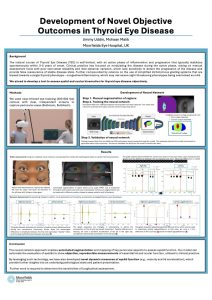Innovative Research on Thyroid Eye Disease
In a notable achievement at the Innovate Thyroid Eye Disease (TED) 2024 Multidisciplinary Symposium, Dr. Jimmy Uddin and Dr. Mohsan Malik, renowned ophthalmologists, secured best poster prize for their groundbreaking poster presentation titled “Development of Novel Objective Outcomes in Thyroid’s Eye Disease.” Their research promises to significantly enhance the understanding and treatment of Thyroid Eye Disease (TED), a complex and debilitating condition. In particular it will be the best and most objective way to measure eyelid and ocular parameters in any ophthalmic and neurological condition.
Revolutionizing TED Diagnosis and Treatment
Significance of Their Work
Methods: BulbiCAM & BulbiHub
Future Directions and Impact
Dr. Uddin and Dr. Malik’s research is set to pave the way for further studies and collaborations aimed at refining and validating these novel outcomes. Their work exemplifies the innovative spirit needed to tackle the complexities of autoimmune diseases like TED.

